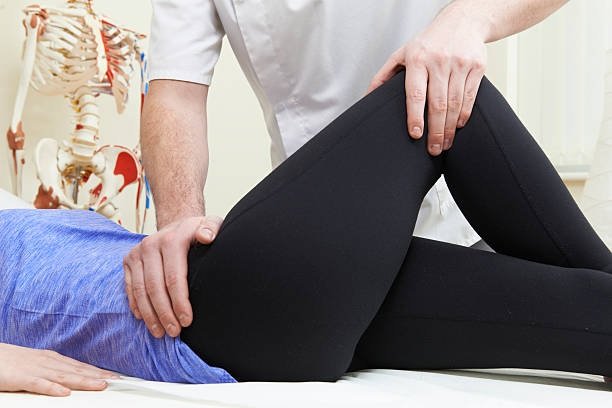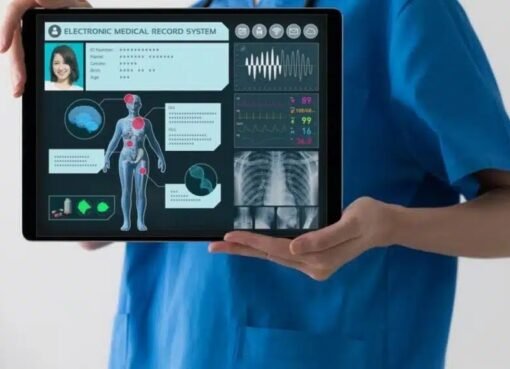Effective Strategies for Alleviating Hip Pain: Ultimate Guide to Hip Pain Relief

Discover game-changing strategies to alleviate hip pain! With our ultimate guide, find lasting relief and reclaim mobility Pain-free life is just a click away!
Hip Pain and Its Common Causes
Hip pain can arise from a variety of sources, including arthritis, bursitis, tendinitis or injuries. This discomfort often disrupts movement, making daily activities challenging. Common causes of hip pain include age-related wear and tear, sports-related overuse, a sedentary lifestyle, and underlying medical conditions affecting the hip joint and surrounding tissues.
Why Understanding Hip Pain Is Essential
Having a clear understanding of hip pain is key to effective diagnosis and treatment. Whether it’s caused by injury or chronic conditions like arthritis, identifying the source of the pain allows healthcare providers to create personalized treatment plans for effective hip pain relief. This helps improve mobility, prevent complications, and ultimately enhance your quality of life.
Anatomy of the Hip: The Key Components
The hip joint consists of the femur head, the acetabulum, and the surrounding ligaments. These elements work together to provide stability and support, allowing a wide range of motion. Muscles such as the glutes and hip flexors are essential for movement, enabling activities like walking, running, and jumping efficiently.
Common Causes of Hip Pain
There are many potential triggers of hip pain. Common culprits include arthritis, bursitis, strains, sprains, tendinitis and injuries from overuse. Lifestyle factors, such as obesity and poor posture, can also contribute. Identifying the root cause of your hip pain helps in determining the most effective treatment options.
Symptoms to Watch Out For
Hip pain may present itself as persistent discomfort, swelling or limited mobility. You might also experience difficulty bearing weight, hear audible sounds from the joint or feel pain radiating down to the knee. If these symptoms persist for more than a few days or worsen, it’s crucial to seek medical attention to get an accurate diagnosis and treatment plan.
When to See a Doctor
It’s important to recognise when hip pain requires medical attention. If you experience persistent pain, unusual symptoms, or worsening conditions, it’s time to consult a doctor. Severe injuries, symptoms like fever, difficulty breathing or sudden confusion and any significant health changes should prompt immediate medical intervention. Early consultation ensures proper treatment and can prevent further complications.
Medical Diagnosis: How It Works
Doctors use various tests and procedures to diagnose hip pain accurately. Imaging studies, physical exams and lab tests help identify underlying conditions that might be causing the pain. This thorough approach ensures that patients receive the most effective treatment options for their specific condition.
Medical Treatment Options for Hip Pain
There are several treatment options available, ranging from physical therapy and medications to more advanced procedures. Healthcare providers consider each patient’s needs, taking into account the benefits and risks of each treatment. The goal is always to recommend the most appropriate intervention to relieve pain and restore function.
Exercises for Hip Pain Relief
Incorporating specific exercises into your routine can significantly help alleviate hip pain. Focus on gentle stretches and strengthening exercises like hip flexor stretches, glute bridges and range-of-motion activities. Low-impact exercises such as swimming or cycling can also be effective. Before starting any exercise program, it’s essential to consult with a healthcare provider to ensure that the routine is safe and beneficial for your condition.
Diet Modifications for Better Hip Health
Diet plays a significant role in managing hip pain. Anti-inflammatory foods, such as leafy greens, fatty fish, nuts and whole grains, can help reduce joint inflammation. On the other hand, it’s wise to limit processed sugars, refined carbs and unhealthy fats. Eating a balanced, anti-inflammatory diet supports overall joint health and can help reduce pain over time.
Stress and Mental Health: Mind-Body Strategies
Stress management and mental health play an important role in alleviating hip pain. Techniques like meditation, yoga, and deep breathing exercises help reduce anxiety, foster relaxation and improve emotional well-being. These mind-body practices can enhance your ability to cope with the discomfort and promote overall resilience.
Maintaining a Healthy Weight
Maintaining a healthy weight is crucial for overall joint health, particularly for the hips. Extra weight puts additional strain on the joints, which can lead to or exacerbate hip pain. Achieving and maintaining a balanced weight reduces pressure on your hips, supporting long-term mobility and reducing discomfort.
Regular Physical Activity: A Key to Prevention
Engaging in regular physical activity strengthens muscles around the hip joint, enhances flexibility, and promotes joint stability. Incorporating exercises such as walking, stretching or strength training into your routine can help prevent hip pain and ensure your hips remain healthy as you age.
Rest and Recovery: Essential for Joint Health
Adequate rest is vital for preventing hip pain. Prioritising quality sleep and taking breaks throughout the day allows muscles and joints to recover, reducing the risk of overuse injuries. A balanced approach to rest ensures you’re giving your body the opportunity to heal while maintaining healthy hip function.
Technological Advancements in Treatment
Recent advancements in technology have led to promising new solutions for managing hip pain. From wearable devices that track joint movement to advanced imaging techniques that enhance diagnosis, technology is helping healthcare providers develop personalised treatment plans. Virtual therapy sessions and health apps are also empowering patients to manage their condition more effectively.
Breakthrough Therapies and Research
Ongoing medical research is uncovering new therapies for hip pain. Innovative treatments are improving outcomes for conditions that were once challenging to manage. These breakthroughs not only expand our understanding of hip pain but also offer new hope for those seeking more effective, targeted treatments.
Alternative Therapies for Hip Pain Relief
Alternative therapies, such as acupuncture, chiropractic adjustments, herbal treatments and mindfulness practices are gaining popularity for their holistic approach to pain management. These therapies aim to address the root causes of pain rather than just masking symptoms, offering fewer side effects compared to traditional treatments.
For quick relief, try applying a cold compress to reduce inflammation or heat therapy for muscle relaxation. Gentle stretching, low-impact exercises and over-the-counter pain relievers may also help. Always consult with a healthcare provider for a tailored treatment plan that addresses your specific needs.
The best pain relief for hip pain depends on the individual and the severity of the condition. Common treatments include over-the-counter medications like ibuprofen, physical therapy to strengthen muscles, hot or cold compresses or corticosteroid injections. Your doctor can recommend the best approach for your situation.
Unbearable hip pain may be caused by conditions such as arthritis, bursitis, fractures, tendinitis or nerve compression. Injuries, obesity and age-related degeneration can also worsen the pain, so it’s crucial to consult a healthcare professional for an accurate diagnosis and treatment.
Walking with hip pain isn’t always advisable, especially if the pain is persistent. While some movement can be beneficial, it’s important to listen to your body. Consult a healthcare provider for appropriate treatment to avoid exacerbating the condition.



